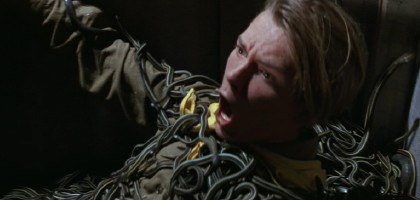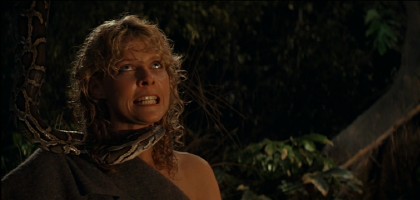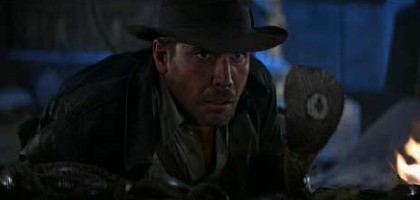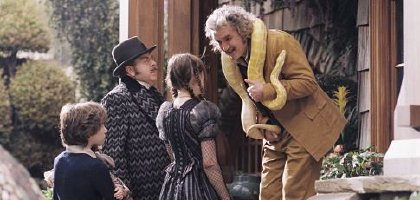Indiana Jones and the Last Crusade
- Year: 1989
- Format: Movie
- Buy It at Amazon.com
- View the IMDb Listing
- Categories: Animation and Animatronics, Help! It’s Harmless!, It’s Just a Snake, Dr. Jones
- Posted on November 29, 2006

I have had it with these motherf***ing snakes on this motherf***ing train! Henry “Indiana” Jones Jr., Age 13
Young Indy is a little old to be developing a phobia, and it’s a little precious to suggest that his adult character traits were formed in an eight-minute span, but there it is. While trying to escape from the bad guys in Utah, Indy jumps on a circus train and runs into trouble in the reptile car when the catwalk gives way. First he somersaults into a tank containing an animatronic anaconda — say that ten times — then falls backwards into a crate filled with small snakes. Those snakes — like the one we saw earlier when Indy tells his scouting friend “It’s only a snake” — are Red-sided Garter Snakes (Thamnophis sirtalis parietalis).
Ahem. I know something about Red-sided Garter Snakes: not only have I been to the dens, I’ve also bred and raised that particular subspecies. Spielberg and company used thousands of them, imported from Manitoba, which at that time still allowed commercial collecting. (A year or two later, after an average of 52,000 snakes per year were harvested from the province, collecting was stopped over concerns that the population was being fished out.)
Interestingly, the snake that crawls from Indy’s wrist onto one of the bad guys a minute or two later isn’t a red-sided garter; my partner Jennifer, who tried to ascertain the sex of the snakes while watching this movie, immediately identified it as a Wandering Garter Snake (Thamnophis elegans vagrans). We’ve got one of those too, and even had a litter a few years back.
So, garter snakes made Indiana Jones an ophidiophobe. What a pussy.



